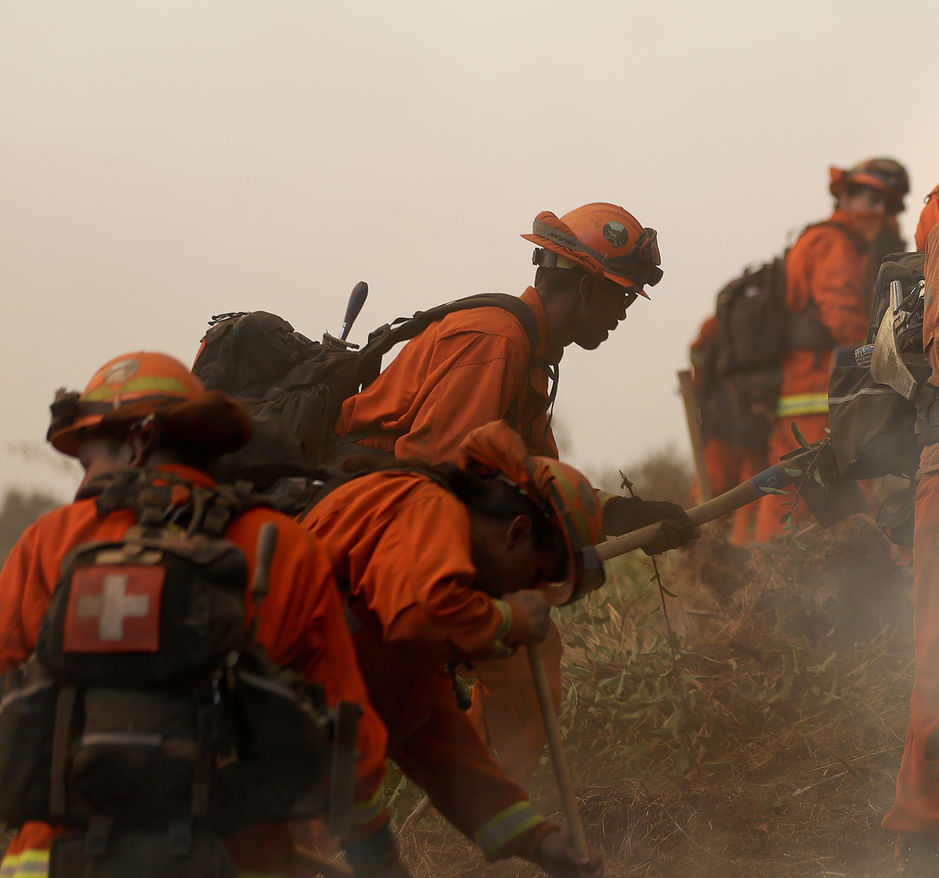Behind the Scenes of Incarcerated Firefighters at Women’s Fire Camps and California Wildfires

By Rosie Stockton and Chisa Hughes, UC Sentencing Project
California’s wildfire crisis has brought widespread attention to the state’s reliance on incarcerated labor to combat fires. While many are aware of incarcerated individuals working as frontline firefighters, the hidden, gendered labor within Women’s Fire Camps is essential to keeping the firefighting industry running year-round.
Women’s Fire Camps in California
Two operational Women’s Fire Camps exist in Southern California: Malibu Fire Camp and Puerta La Cruz Fire Camp. These camps exclusively house incarcerated people from women’s prisons in California. During major wildfires, such as the Palisades, Sylmar, and Eaton Fires, around 20 of the 400 incarcerated firefighters deployed came from the Malibu Fire Camp.
Wages at Fire Camp: A Stark Disparity
Despite the dangerous nature of their work, incarcerated firefighters at Malibu Fire Camp earn between $5.80 and $10.24 per day. In contrast, the incarcerated laborers responsible for cooking, cleaning, and maintaining the camp receive the standard prison wage of just 16 cents per hour. This stark pay disparity underscores the exploitation inherent in the system.
The Dangers of Fire Camp Work
The work at Fire Camp is grueling and hazardous. A Time Magazine report revealed that incarcerated firefighters are four times more likely to suffer object-induced injuries and eight times more likely to experience smoke inhalation injuries compared to their non-incarcerated counterparts. The risks they face, often with inadequate protective gear or medical care, highlight the inequities of their role in California’s wildfire response system.
Why Incarcerated People Volunteer for Fire Camp
While participation in Fire Camp is technically voluntary, incarcerated individuals are highly motivated to take on these risky jobs due to certain benefits. These include:
- Increased visitation time with family.
- Earned time-off credits: Most incarcerated firefighters receive two additional days off their sentence for every one day served on a fire crew.
- At Puerta La Cruz Fire Camp, an “Outdoor Children’s Educational Recreation Center” offers incarcerated women a rare opportunity to bond with their children.
Despite the dangers—sometimes working 24-hour shifts—many see Fire Camp as a coveted opportunity to improve their circumstances within the prison system.
California’s Firefighting Industry Profits Off Incarcerated Labor Year-Round
Even outside of fire season, California continues to profit from incarcerated labor. The Malibu Conservation Camp Sew Shop repairs and alters uniforms for firefighters and fire stations in the Los Angeles County area. Until 2018, fire-retardant uniforms worn by incarcerated firefighters were produced by incarcerated women at the California Institute for Women (CIW). Additionally, the shop manufactures essential firefighting gear, including duffle bags, backpacks, radio harnesses, and belts for the Los Angeles County Fire Department (LACFD).
Who is Eligible to Work at Fire Camp?
Fire Camp is not open to all incarcerated people. Eligibility requirements include:
- “Minimum custody” status, a classification awarded based on good behavior, ability to follow rules, and participation in rehabilitative programs.
- Having eight years or less remaining on their sentence.
Individuals serving long-term sentences cannot transfer to Fire Camps, though some work as clerks within the camp system.
How to Get Involved
To support incarcerated women firefighters and advocate for change, consider connecting with organizations such as the California Coalition for Women Prisoners (CCWP) and the UC Sentencing Project. These organizations offer letter-writing groups, research initiatives, and advocacy efforts to stand in solidarity with incarcerated people in California’s women’s prisons.

